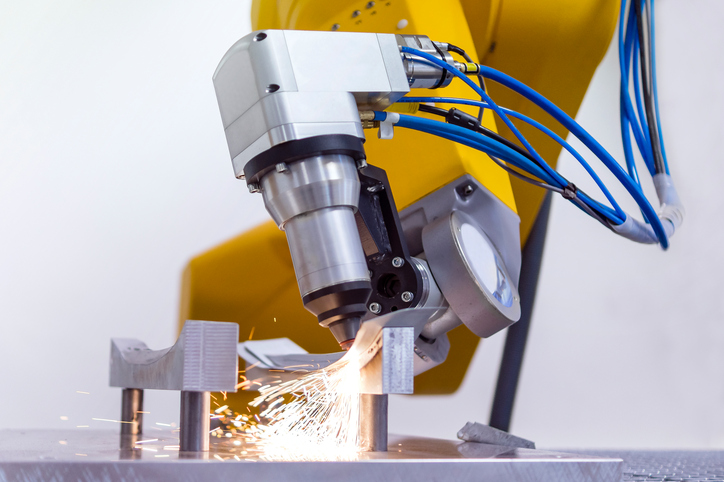The Difference Between Oxyfuel Cutting and Plasma Cutting and Choosing the Right One for Your Application

Robotic cutting applications are common when it comes to automation in production lines. Often, manufacturers are presented with a choice between using robotic oxyfuel cutting or robotic plasma cutting for their application. It’s not always an easy decision choosing between one or the other and in many cases either option would work.
Both oxyfuel cutting and plasma cutting have their advantages and disadvantages based on the underlying technology that enables their cutting ability. It’s important to understand each of these to properly choose the correct type of cutting for your application.
The Basics of Plasma Cutting and Oxyfuel Cutting
Plasma cutting is made possible by introducing electricity into compressed air to create an ionized, imbalanced plasma gas. This plasma gas is pushed through a small opening in the nozzle by pressurized air, producing a controlled, electrically conductive stream of plasma gas. More energy can be added to increase the heat of the plasma arc, which improves the cutting capacity and efficiency of the system.
Oxyfuel cutting is where an oxygen fuel gas flame preheats the material to its ignition temperature, then a powerful oxygen jet is directed at the material. This creates a chemical reaction between the oxygen and the part to create iron oxide, also called slag, which will sit in a puddle on top of the heated area. The high-power oxygen jet then pushes the pre-heated area down through the bottom of the plate, completing the cutting process.
The Advantages and Disadvantages of Plasma Cutting and Oxyfuel Cutting
Robotic plasma cutting is best known for its cutting speed in a wide range of applications. Typically, robotic plasma cutting is used for thin, non-ferrous metals. The main disadvantages of plasma cutting are its ineffectiveness for thick metals, as well as ferrous metals.
Robotic oxyfuel cutting is best at providing welds for thick metals that contain iron. Oxyfuel cutting often provides precision cuts, also. Its main disadvantage is the time it takes to cut materials and its ineffectiveness for thin materials.
Robotic oxyfuel cutting and robotic plasma cutting both have their advantages and disadvantages. While many applications could be automated by both, each excels in a different way, depending on the material being used and the desired performance parameters.
It can be a difficult choice choosing between the two cutting technologies but understanding the fundamental differences between oxyfuel cutting and plasma cutting can help make the decision easier.
For more information, read about Genesis Systems Group’s industry-leading robotic oxyfuel cutting and robotic plasma cutting solutions.
Posted in Robotic Applications